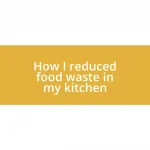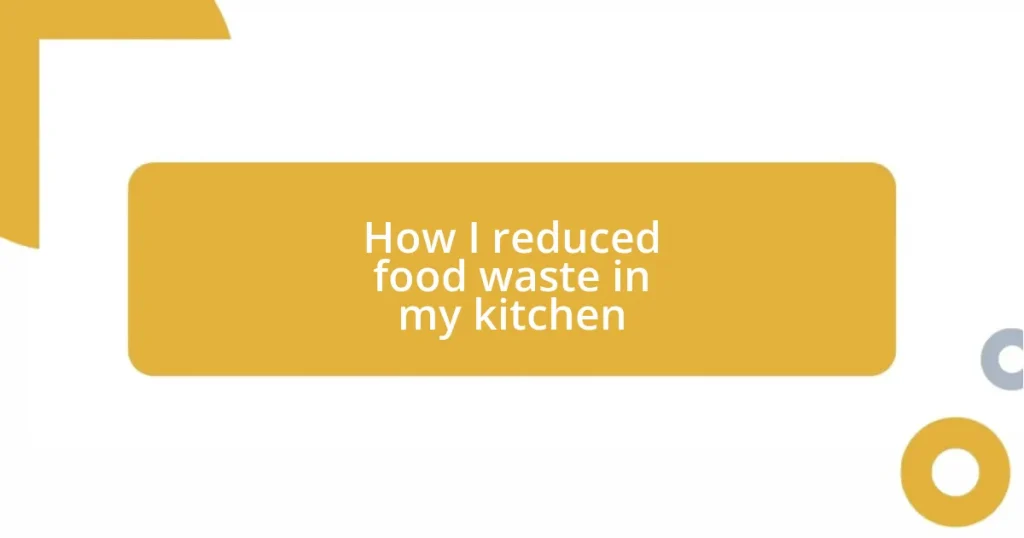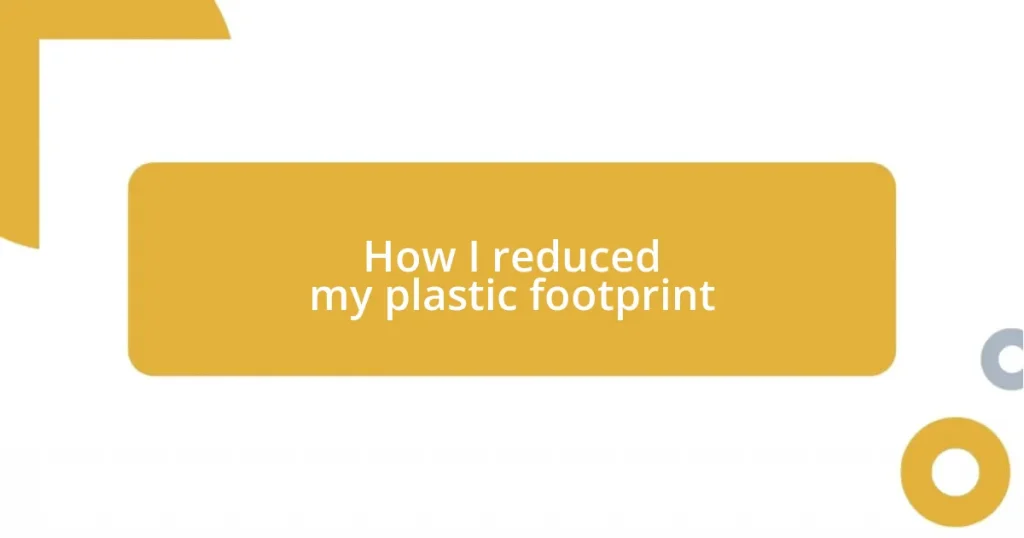Key takeaways:
- Realization of the significant environmental impact of food waste, leading to a motivated change in personal habits.
- Effective meal planning, seasonal ingredient usage, and creative leftover transformations significantly reduce food waste.
- Proper food storage practices and labeling extend the freshness of ingredients and minimize spoilage.
- Sharing excess food with neighbors and donating to food banks fosters community connection and reduces waste.
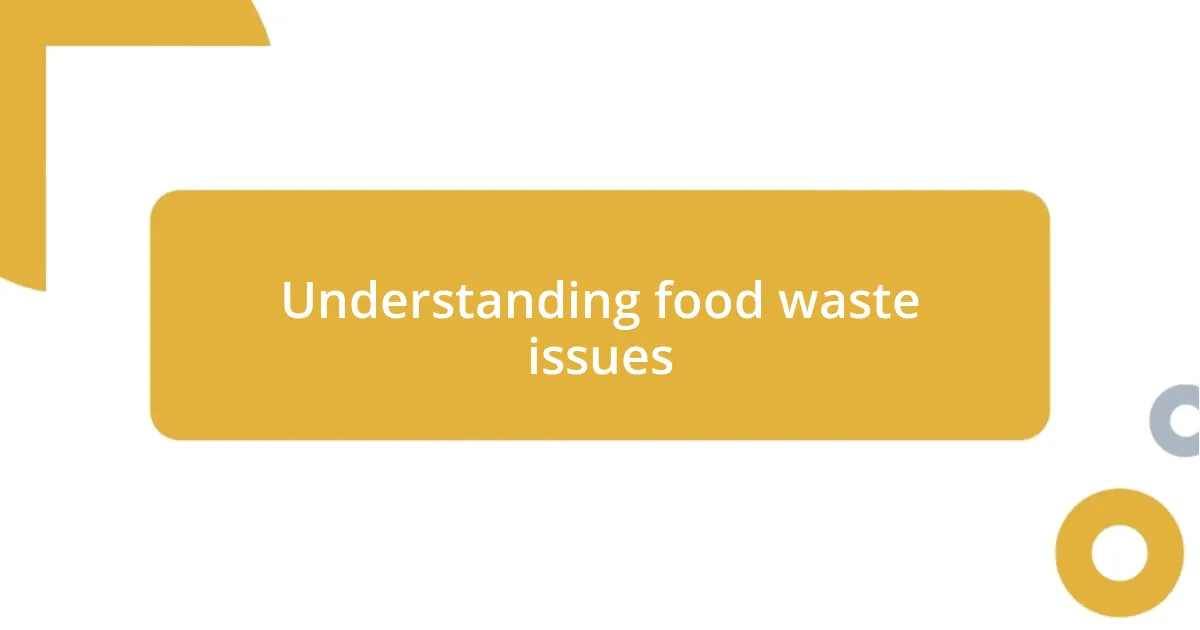
Understanding food waste issues
I remember the first time I realized just how much food we waste. I had just cleaned out my fridge, and I was shocked to find bags of wilted greens and leftovers I’d completely forgotten about. That moment made me question how something that could nourish us ended up in the trash instead.
Food waste isn’t just about what we toss out; it echoes deeper issues in our society. Have you ever thought about the environmental impact? When we waste food, we also waste all the resources used to produce it—water, energy, labor—contributing to greenhouse gas emissions. This realization struck me hard; I felt a mix of guilt and motivation to change my own habits.
In a world where millions go hungry, it’s sad to think that nearly one-third of all food produced is wasted. This staggering statistic often keeps me up at night, pondering the disconnect between abundance and scarcity. How can we bridge this gap? I felt compelled to reflect on my consumption patterns and began to explore actionable steps to minimize my kitchen waste.
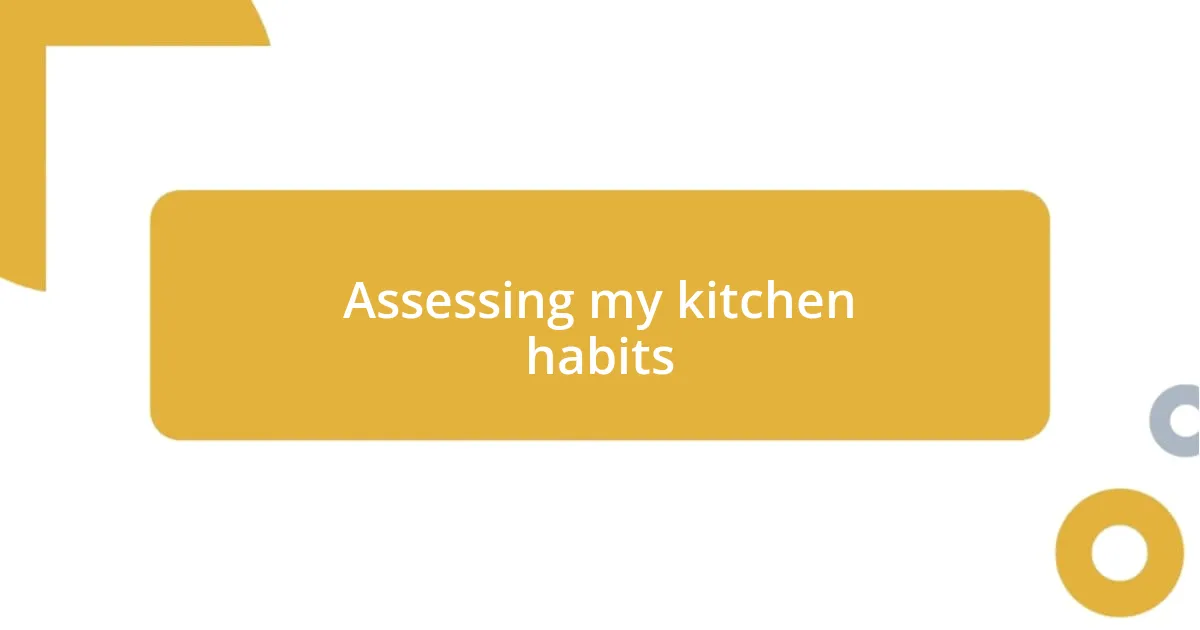
Assessing my kitchen habits
As I dove deeper into my kitchen habits, I started to take stock of what was actually happening behind the scenes. I realized that my grocery shopping was often impulsive, leading to the accumulation of items I didn’t use. This struck me as ironic; I was trying to feed my family healthily while simultaneously contributing to waste. I made a conscious effort to keep a running list of essentials and review my pantry regularly.
Here’s what I discovered during my assessment:
- Impulse Buying: I frequently grabbed extra snacks that often expired before they were touched.
- Portion Control: Preparing meals for my family sometimes led to cooking far too much, resulting in leftovers that I’d neglect.
- Storage Practices: I had a habit of placing items in the back of the fridge, forgotten until they spoiled.
These realizations were eye-opening and honestly a bit overwhelming, but they guided me toward a more mindful approach in my kitchen. Each small change began to feel like a step in the right direction.
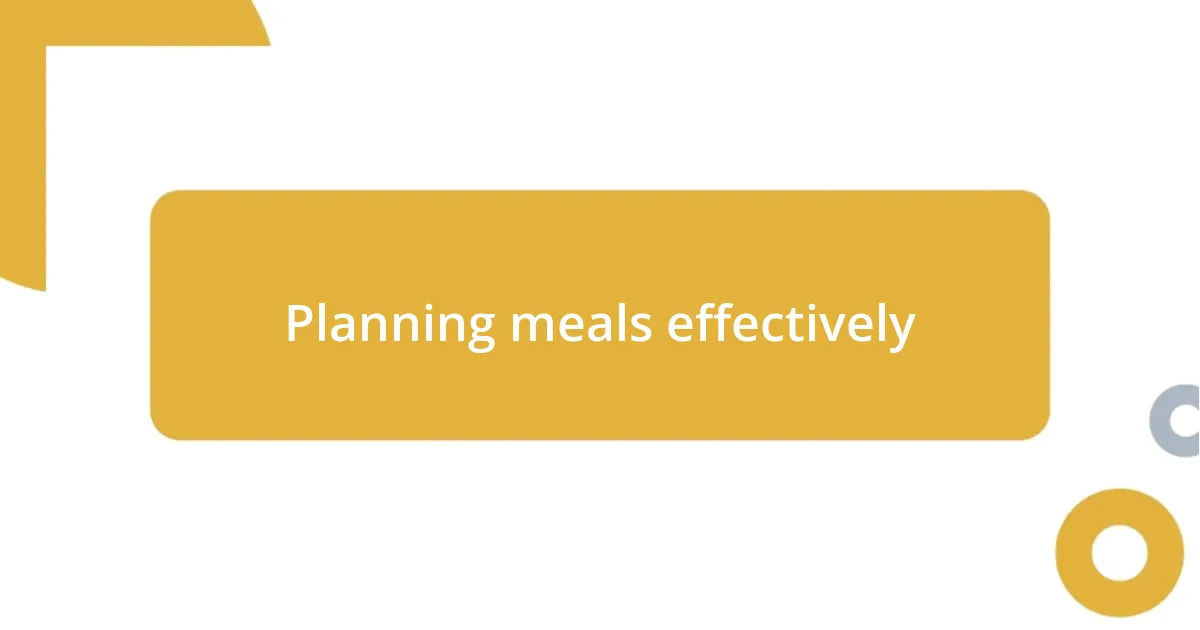
Planning meals effectively
When I began planning my meals effectively, I realized it was a game changer. For instance, instead of figuring out what to cook on the fly, I started devoting a little time each week to create a meal plan. I found that mapping out meals not only lowered my stress levels during busy weekdays but also helped me use ingredients before they went bad. Now, I actually look forward to meal prep as a way to nourish my family while reducing waste.
Additionally, I’ve embraced seasonal ingredients in my planning. This shift changed my perspective on what’s in my kitchen. By aligning my meals with what’s fresh and available, I’ve noticed not only a reduction in food waste but also an improvement in flavor. For example, when strawberries are in season, I buy them in bulk, knowing I’ll enjoy them in multiple ways—like in salads and smoothies—before they spoil. Seasonality matters, and it’s a fun way to explore diverse meal options.
I’ve also started utilizing leftovers more creatively. Instead of dreading what to do with extra roasted vegetables, I turn them into soups or stir-fries. This habit not only prevents spoilage but also sparks my creativity in the kitchen. I often find myself thinking, “How can I repurpose this in a tasty way?” This mindset shift has made cooking feel less like a chore and more like an adventure, making every meal something special.
| Meal Planning Strategy | Impact on Food Waste |
|---|---|
| Weekly Meal Planning | Reduces last-minute grocery runs and ensures ingredients are used promptly. |
| Using Seasonal Ingredients | Enhances meal flavor while allowing for variety, preventing over-purchasing. |
| Creative Leftover Usage | Minimizes spoilage by transforming extras into new, delicious meals. |
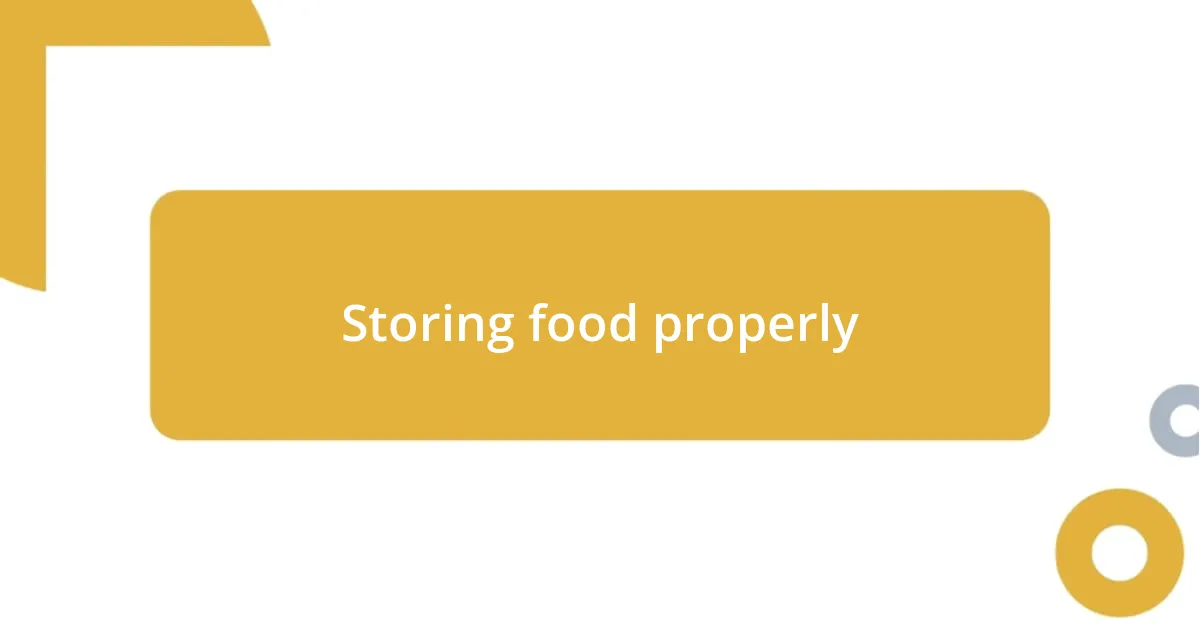
Storing food properly
I’ve learned that storing food properly is almost as crucial as the ingredients themselves. For example, I used to toss leafy greens into the fridge without a second thought, only to find them wilted and sad days later. Now, I wrap them in a damp paper towel and store them in a breathable container. Trust me, it’s made a world of difference; they stay fresh longer, and I feel a sense of accomplishment every time I reach for crisp greens instead of mushy ones.
Another surprising discovery was the impact of glass containers over plastic ones. I made the switch after noticing that some sauces would absorb the plastic’s smell or flavor. With glass, not only do my leftovers stay tastier, but I’ve also eliminated potential chemical leaching into my food. Plus, there’s something about seeing beautiful layers of food through clear glass that brings a little joy to my day—like an art piece in my fridge!
I also realized the importance of labeling my food. It sounds simple, but writing dates on my containers has saved me from confusion on more than one occasion. How many times have I opened a jar and wondered, “Is this still good?” Now, if I see something nearing its expiration date, it prompts me to use it right away, turning a potential waste situation into a flavorful meal. It’s amazing how a little effort in storage can keep my kitchen and my conscience clear!
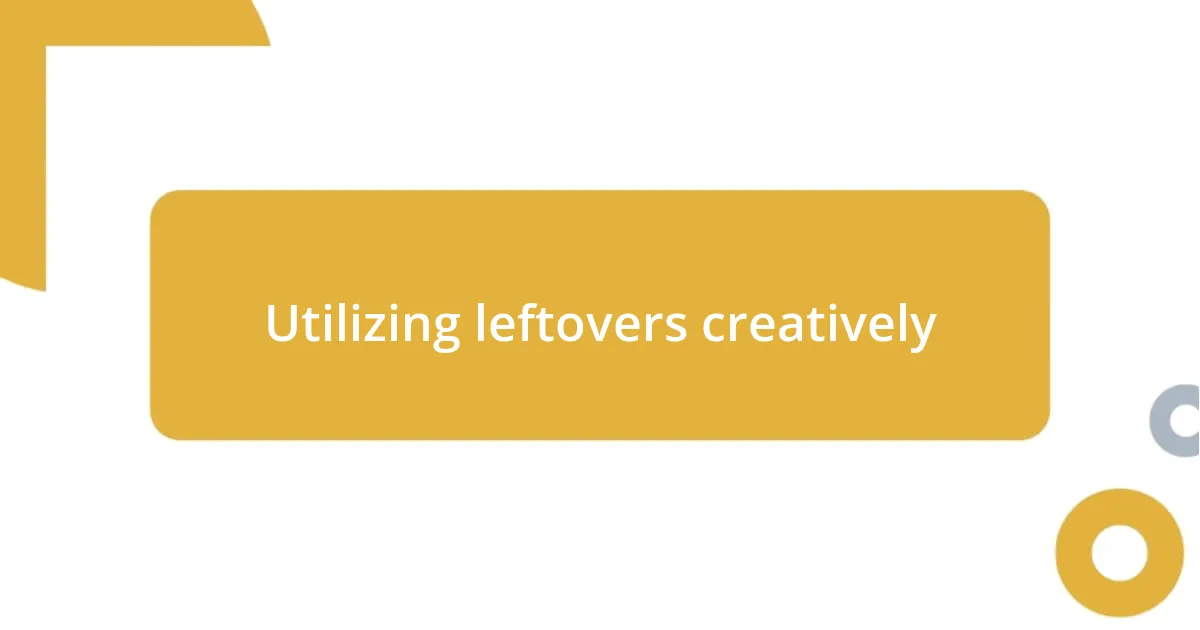
Utilizing leftovers creatively
One of my favorite ways to utilize leftovers creatively is by transforming them into hearty frittatas. Just the other morning, I found half a cup of cooked vegetables and some crumbled feta cheese sitting in my fridge. I whisked together a few eggs, added the leftovers, and baked it all in a skillet. The result was a delicious breakfast that felt indulgent rather than a simple way to cry over wasted food. It’s moments like these that remind me how exciting leftover transformation can be.
Sometimes, I find myself with extra rice or quinoa after dinner, and instead of letting it sit until I forget about it, I whip up a savory grain bowl the next day. By tossing in whatever fresh produce I have on hand—like a handful of arugula or roasted sweet potatoes—I create a vibrant, nutritious meal. It feels almost like a scavenger hunt! I ask myself, “What can I pair together that feels fresh and exciting?” There’s something deeply satisfying about crafting a whole new dish from what could have simply been trash.
One approach I hadn’t considered until recently was repurposing leftover fruit. After a family gathering, I often have an abundance of berries that would soon go bad. I decided to blend them into smoothies or cook them down into a simple sauce for pancakes. The flavors burst with freshness, and I can’t help but smile knowing I’ve created something delightful rather than letting those little gems go to waste. Each experience opens my eyes to the endless possibilities that lie within my own kitchen!
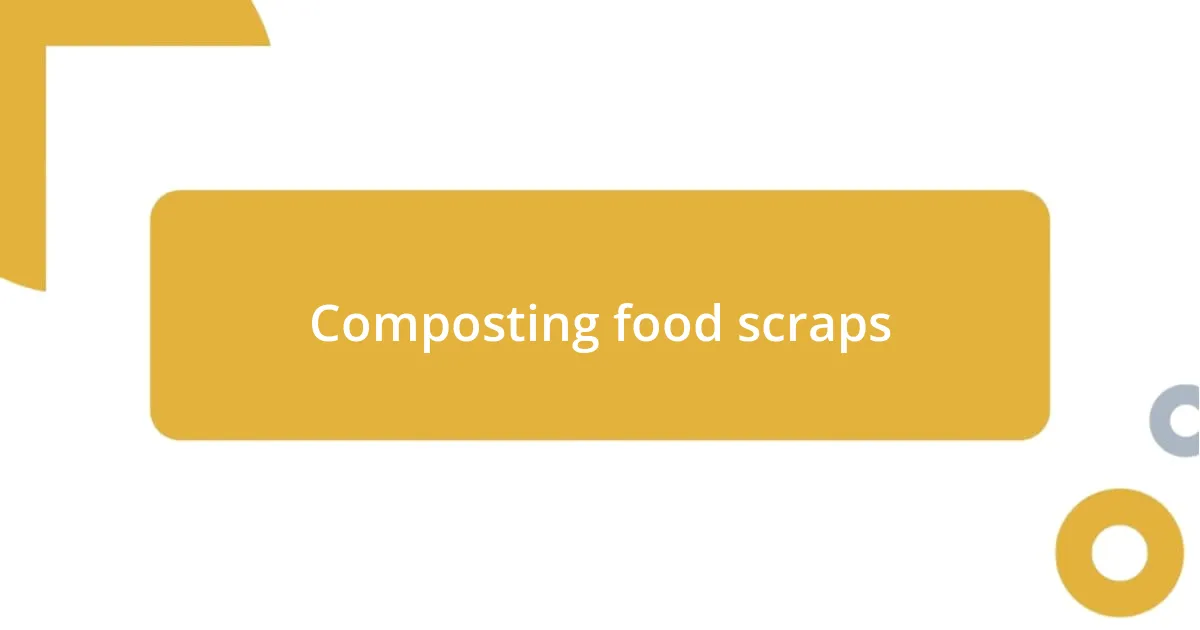
Composting food scraps
I started composting my food scraps a few years ago, and let me tell you, it was a game-changer. Initially, I was hesitant. I thought, “Am I really going to create a compost pile?” But once I saw how easy it was, I was hooked. Using a simple countertop compost bin made it so convenient — I’d just toss in vegetable peels, coffee grounds, and eggshells. Before I knew it, I was turning trash into treasure.
One of my favorite moments was when I turned my first batch of compost into rich, dark soil for my garden. As I crumbled it into the earth, I felt a sense of connection to nature that I hadn’t anticipated. It was amazing to consider that my kitchen scraps had transformed into something nourishing for my plants. I can’t help but wonder how many people miss out on that rewarding experience simply because they perceive composting as too much work.
It’s not just about reducing waste; it’s about embracing a circular economy in my own home. Whenever I toss something in the compost, I think about how I’m closing the loop. Plus, those moments of discovery—like realizing apple cores create great compost—keep me engaged. I’ve learned that it’s not just a chore; it’s part of a lifestyle that aligns with my values of sustainability and creativity. And honestly, who wouldn’t want to be a part of that?
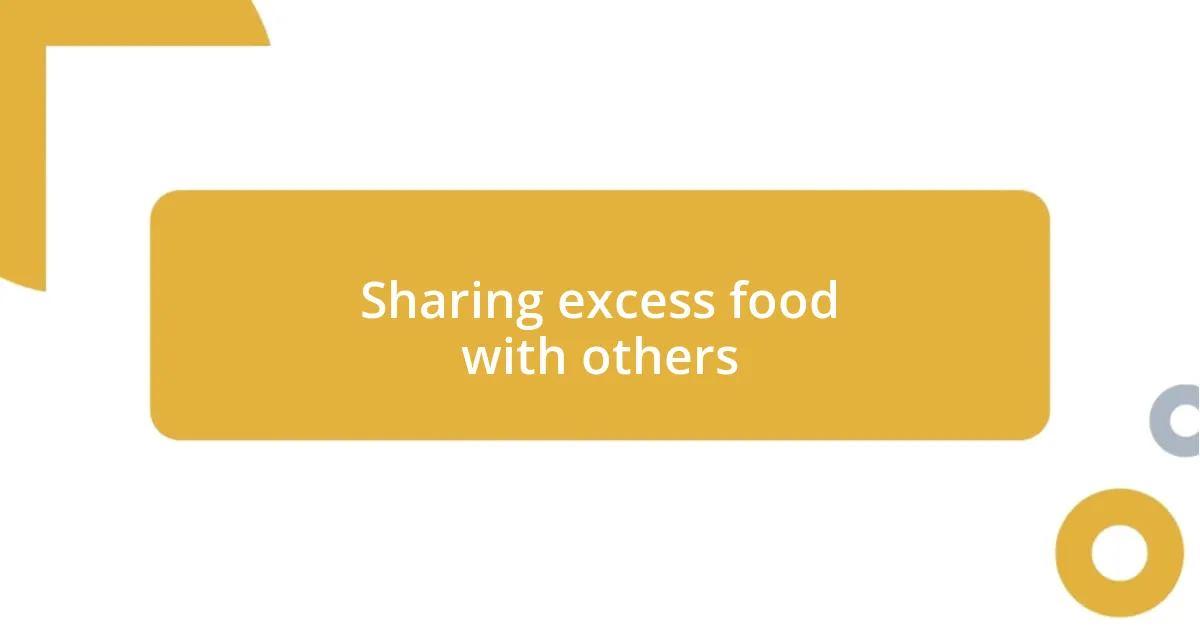
Sharing excess food with others
Sharing excess food with others has been a heartwarming addition to my approach to reducing food waste. I recall the time I baked two dozen muffins for a community event but ended up with extras. Instead of letting them languish on my kitchen counter, I packed them up and shared them with my neighbors. The smiles on their faces as they enjoyed a homemade treat made me realize how pleasant it is to spread joy through food.
Sometimes, I find myself with an abundance of ingredients—like fresh herbs or seasonal fruits—that I can’t use up before they spoil. One afternoon, I invited a few friends over for a “let’s-clean-out-the-fridge” potluck. Everyone brought what they had on hand, and we whipped up a stunning dinner with leftovers and excess goods. Not only did we create something delicious together, but we also bonded over the shared experience of minimizing waste in a fun way.
It’s incredible how sharing can ripple outwards. The other day, I learned that one of my colleagues frequently donates extra groceries to a local food bank. Inspired by her passion, I started dropping off surplus items myself. Knowing that my extra food can nourish someone in need adds a profound layer of fulfillment to my kitchen practices. Have you considered how sharing food could become a small act of kindness in your community?


